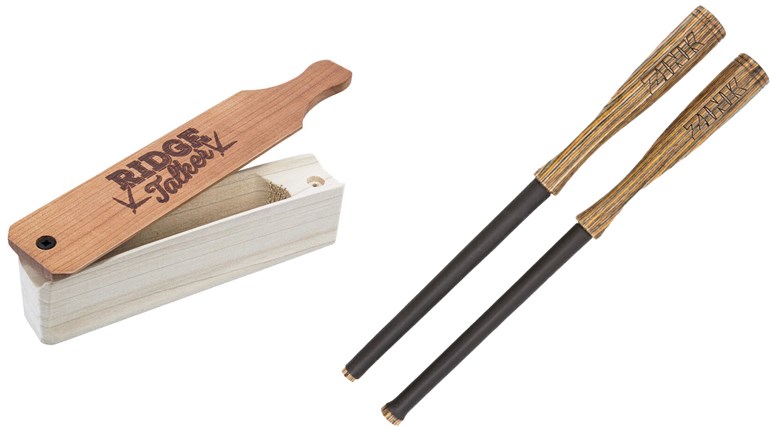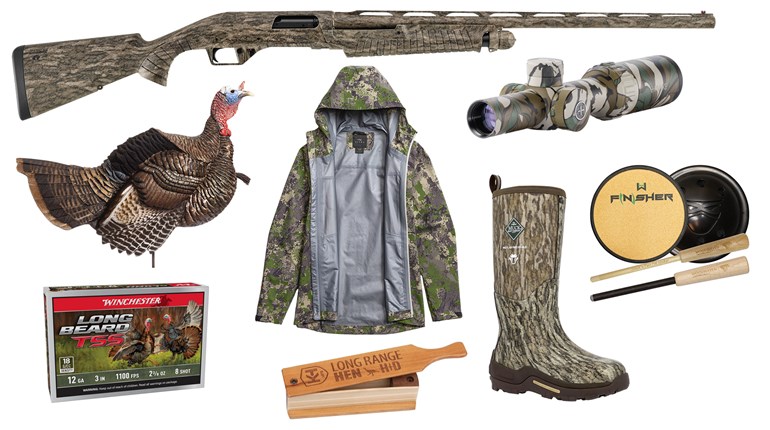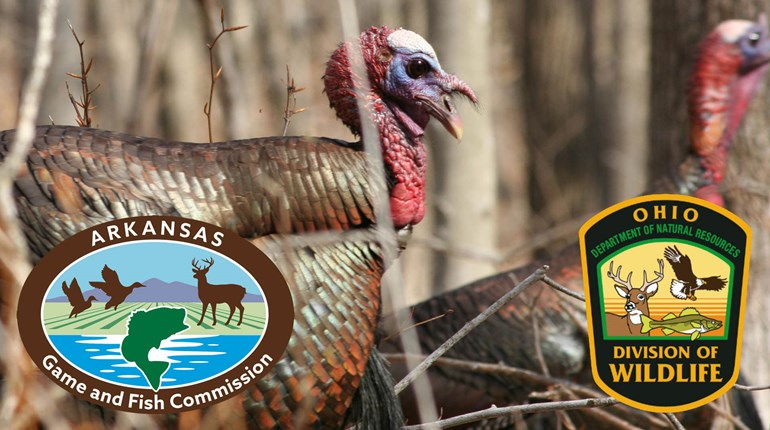
When the excitement of turkey season is over, what’s an avid hunter to do? Simple … Start getting ready for the next turkey season—specifically by learning to master different types of turkey calls. After all, it takes great skill to entice one of the most challenging North American game animals into shotgun range.
Plus, you get one shot at a turkey, so you need to make it count. It’s possible to spend half a day coaxing a turkey to your location, but one sour note from your call could send him heading for the next county. That’s why you should master the different calls during the off season.
Let’s take a look at six different types of turkey calls: push, box, slate, diaphragm, wing-bone and locator.
Push Button Call 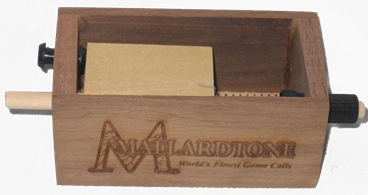
Push button calls are by far the easiest turkey call to use and are popular with new turkey hunters. These types of calls consist of a small hardwood box and a push button, and can easily be used with one hand. The body of the call is held in the palm of the hand and gripped by the thumb and three fingers. A small spring-loaded dowel with a small block of wood is situated inside the body of the call. The call is operated by pressing and releasing the dowel rod extending from the body of the call. Yelps, clucks and purrs are made by the inner block rubbing against the body of the call.
Box Call 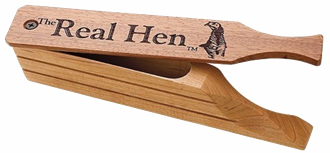
Box calls are among the most popular with turkey hunters, as they can be used to make a wide variety of hen sounds, and can be heard by the turkey far from the hunter’s position. A box call consists of a rectangle box with an open top, approximately 6 to 8 inches long. On top of the box is a thin paddle attached at the top by a screw or dowel. The box is held in the palm of one hand, while the paddle is drug against the sides of the box. This motion creates a sound that imitates the calls of a hen. This call is operated by two hands, which might be tricky when making the transition from call to shotgun.
Slate Call 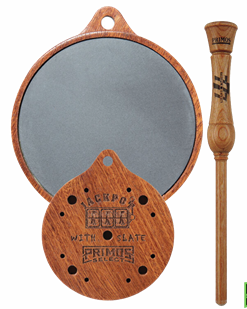
Slate calls, typically used by more experienced turkey hunters because of the sounds that can be produced, are the natural progression of calls. A slate call consists of a pot and a striker. The pot holds a piece of slate, ceramic or glass. A striker is made from wood, aluminum or carbon. The pot is held in the palm of one hand and the other hand holds the striker in the same manner as you would hold a pen or pencil. The call works by dragging the striker across the face of the pot. Short strokes can produce yelps and clucks and long strokes can produce purrs. The slate call can produce several different hen sounds.
Diaphragm Call 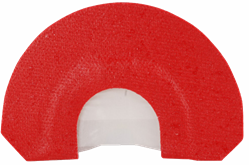
Diaphragm calls are also referred to as mouth calls. These calls are the least expensive but are the hardest to master. Diaphragm calls are a horseshoe-shaped soft plastic, with a rubber or latex reed. The call is held in the mouth and the reed vibrates as air is forced over it. This vibration is what makes the turkey sounds. The sounds produced by the diaphragm call does not travel as far as the other calls. The benefit of this type of call is that it is hands-free. This leaves both hands free to handle the shotgun so the call can be used right up until the time the hunter takes the shot.
Wing-Bone Call
Wing-bone calls are the oldest form of calls, developed by native Americans, dating back possibly 4,000 years. Wing-bone calls are made up of the three bones in a turkey’s wing—the humerus, radius and ulna. These calls are made from the wings of the turkeys that were hunted. After the bones are removed from the turkey, they are cleaned, boiled, marrow removed, and inserted into each other. The sounds are made by placing the smaller end in between the lips and making a series of short sucking motions.

The wing bones of a mature tom turkey are the most desirable for wing-bone calls. Bones from different turkeys make different sounds. Bones from mature toms make a deep and raspy sound. Bones from hens make a higher and crispier sound. Bones from jakes make a sound that falls in between the toms and hens. Since calls made from different turkeys make different sounds, a savvy hunter will have one of each in his or her bag of tricks. Another benefit of the wing-bone call is it is the loudest and the sound travels the furthest of any other type of call.
Locator Calls 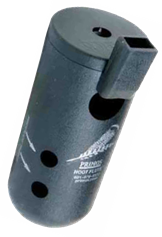
Locator calls work by enticing a tom turkey into a “shock gobble.” During the spring when toms are looking for a hen, it is very easy to startle a gobble out of them. This is done to locate a bird to set up on and call in. During this time of the year, just about anything will get a gobbler to give away his location. The slamming of a truck door during the spring is enough to get a tom to shock gobble. The owl call and the crow call are two locator calls that every turkey hunter should have in his or her bag.
Owl calls are used to locate a turkey roost. The idea is to go out the day before your hunt at dusk or the day of your hunt before sunrise to locate the roost. Though turkeys should never be shot off their roost (refer to your local hunting regulations), the hunter uses this information to set up away from the roost, so they are in a position to start luring them with turkey calls after they fly down from the roost at sunrise. Crow calls are used after sunup to locate a turkey and set up the hunting location, and start calling them in.
Owl and crow calls are not the only calls used for locating turkey. Coyote calls, rabbit calls, gobble locator calls, or any other type of calls can be used to locate turkeys. You can even clap your hands together to entice a tom into a shock gobble!
I was once on a turkey hunt with several experienced turkey hunters in south Texas. After a morning of calling without any luck, we went back to the camp house to wait for the afternoon hunt. I was outside the camp house talking to one of the other hunters and showing him my shock gobble call. My call sounded just like a tom looking for romance, and I demonstrated it for the turkey hunter. To our surprise, the other hunter in the camp house came busting out of the front door with his shotgun in one hand and his slate call in the other and ran around to the brush behind our cabin muttering the words, “I hear a turkey behind the house!”
We all had a good laugh! But there is a lesson to be learned here. When you are calling for turkey, there may be other hunters in the area, and you may be calling up a two-legged hunter instead! Safety should always be on our minds no matter what you are hunting, especially when using decoys. Always be certain of your target and what is beyond it—especially if it turns out to be another hunter.
There is another danger that might be lurking when you are sitting in the woods trying to call up a turkey. Believe it or not, bobcats pose a threat to turkey hunters. I have heard and read accounts of turkey hunters being mistaken for a bird by a bobcat. The hunter can end up with a face full of claw and teeth marks. It should go without saying, but always be aware of your surroundings when hunting. When you are calling in the woods, you are also calling up predators. Bobcats, coyotes, bear, and even mountain lions are attracted to all kinds of calls. Have fun, but most of all stay safe!













